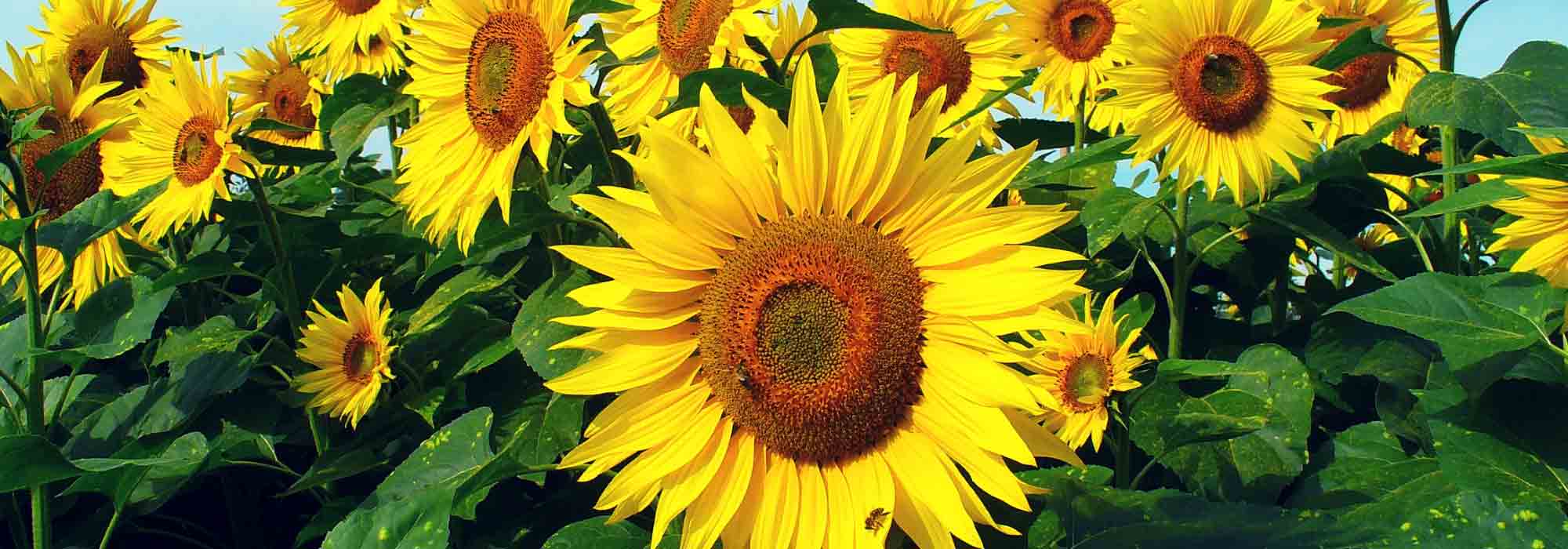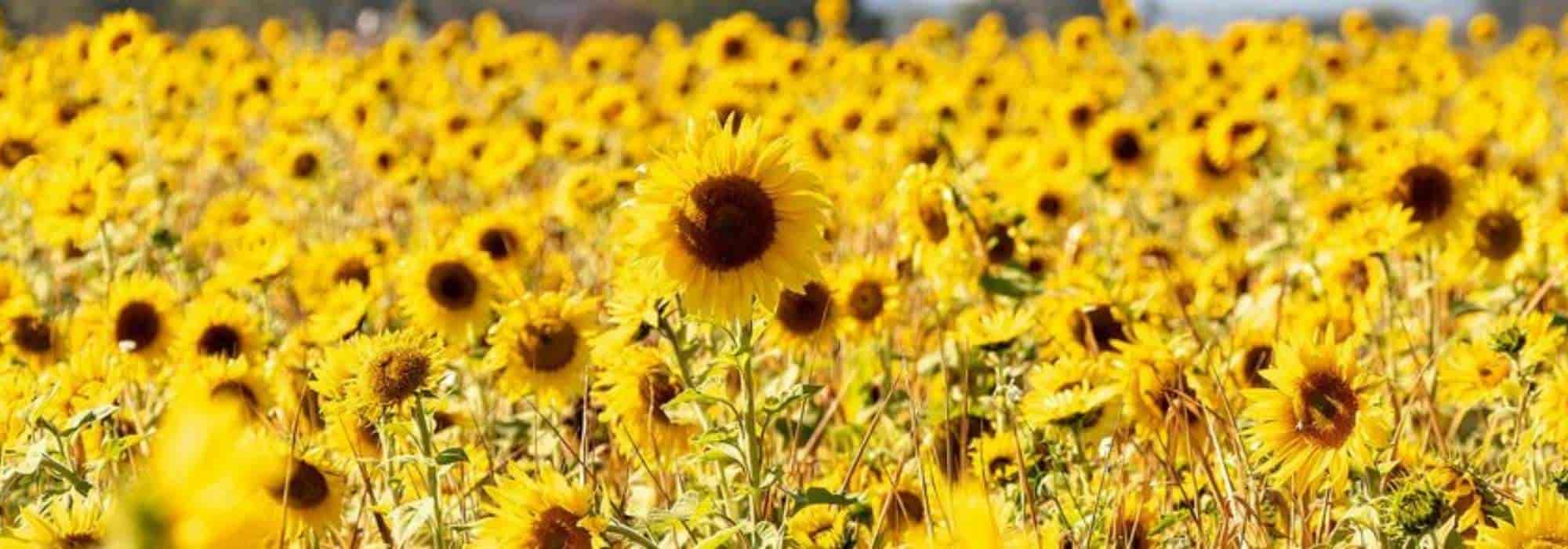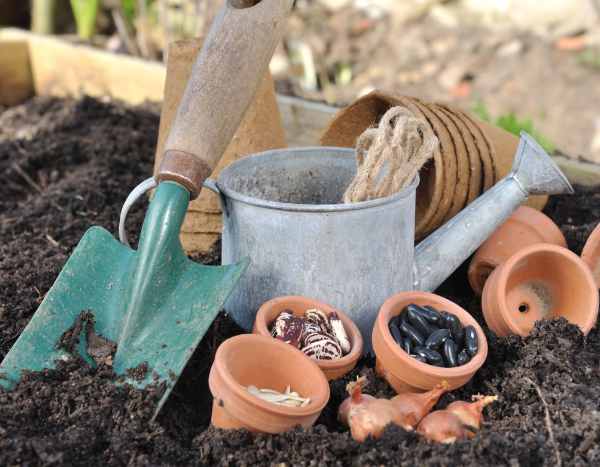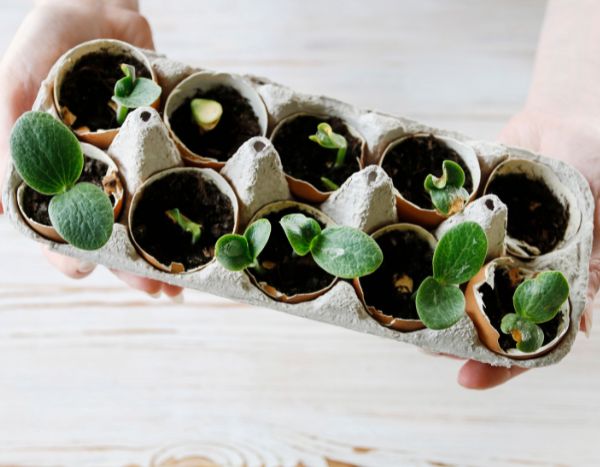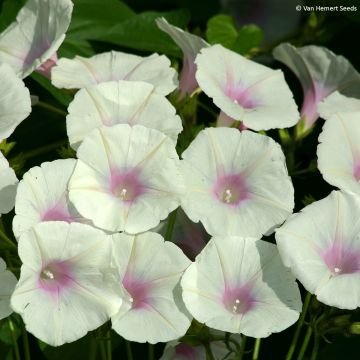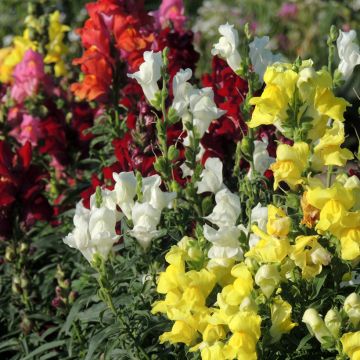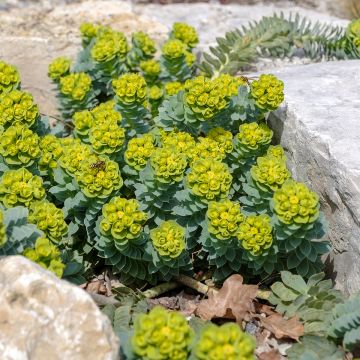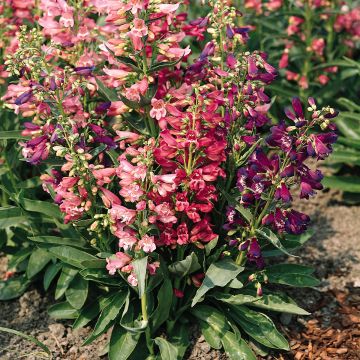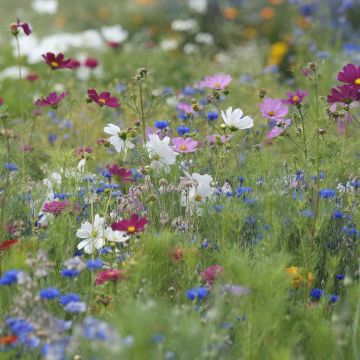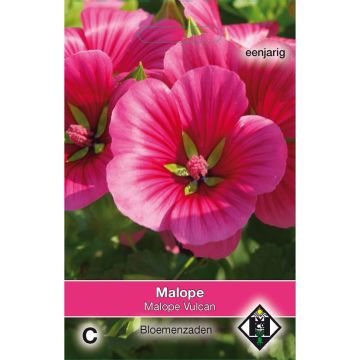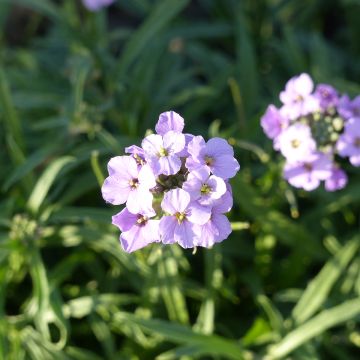

Sunflower Florenza seeds - Helianthus annuus


Sunflower Florenza seeds - Helianthus annuus
Sunflower Florenza seeds - Helianthus annuus
Helianthus annuus Florenza
Sunflower
Special offer!
Receive a €20 voucher for any order over €90 (excluding delivery costs, credit notes, and plastic-free options)!
1- Add your favorite plants to your cart.
2- Once you have reached €90, confirm your order (you can even choose the delivery date!).
3- As soon as your order is shipped, you will receive an email containing your voucher code, valid for 3 months (90 days).
Your voucher is unique and can only be used once, for any order with a minimum value of €20, excluding delivery costs.
Can be combined with other current offers, non-divisible and non-refundable.
Home or relay delivery (depending on size and destination)
Schedule delivery date,
and select date in basket
This plant carries a 6 months recovery warranty
More information
We guarantee the quality of our plants for a full growing cycle, and will replace at our expense any plant that fails to recover under normal climatic and planting conditions.
Would this plant suit my garden?
Set up your Plantfit profile →
Description
The sunflower Helianthus annuus 'Florenza' stands out with its bicolour flowers of velvety brown-red, edged with gold, borne on sturdy, well-branched stems. This annual plant offers a generous summer flowering, sought after for borders, decorative vegetable gardens, and rustic bouquets. Robust, nectar-rich, and easy to grow in full sun, it appreciates rich, well-drained soils. Its main problem is strong winds.
Sunflower or Helianthus annuus 'Florenza' is an annual plant from the Asteraceae family. The species, Helianthus annuus, is native to North America, particularly the Great Plains of the United States and Canada, where it grows naturally in open prairies and well-drained soils. Introduced to Europe in the 16th century, it has become a widely cultivated plant.
'Florenza' is a cultivar with medium stature, reaching 90 cm to 1.20 m in height. It has an upright, well-branched habit and rapid growth: it is capable of flowering approximately 70 days after sowing. The leaves are alternate, ovate to triangular, with toothed margins and a rough surface. They measure between 10 and 20 cm long and are dark green in colour. The stems are robust, upright, slightly hairy, and support the weight of the inflorescences well without staking.
'Florenza' flowers from July to September. The flower heads, measuring 12 to 15 cm in diameter, are composed of sterile peripheral florets (ligulate), forming the coloured "petals", and fertile central florets (tubular), responsible for seed production. Pollination is ensured by bees and other pollinating insects attracted by the bright colour and nectar of the flowers. The fruits are achenes, commonly called sunflower seeds, oval and flattened in shape, measuring about 1 cm long. Although edible, the seeds of 'Florenza' are mainly used for ornamental purposes and cut flowers.
In the garden, Helianthus annuus 'Florenza' evokes the end of summer and its warm colours. Its medium stature and flowers, between mahogany brown and antique yellow, are eye-catching in sunny borders. It pairs well with Cosmos sulphureus 'Cosmic Yellow' and the airy panicles of Panicum virgatum 'Shenandoah', for example. The white umbels of the ornamental carrot 'Dara' will temper the scene. In a pot on a sunny terrace, it makes a centrepiece that can be framed with silver foliage or more subdued flowering plants to highlight its rich colours.
Before flowering, the plant optimises its growth by following the path of the sun. This phenomenon, called heliotropism, has given rise to some of its common names: Heliotrope, Tournesol, Sunflower, Soleil des jardins...
The sunflower in cuisine: The buds, petals, and seeds are edible. Add a few petals to a green salad for colour contrast and their nutty flavour. The green buds can be blanched, then tossed in garlic butter. They taste similar to Jerusalem artichoke. The seed kernel can be eaten raw or roasted.
An ecological asset: All summer long, the honey-producing flowers of Sunflowers attract pollinating insects and butterflies to your garden. A good way to improve the ecosystem and promote fruit and vegetable production in your kitchen garden.
The oil-rich seeds are particularly loved by birds (Parrots, Tits, Doves, Goldfinches, Siskins, Nuthatches, Finches...). After flowering, harvest them to feed the birds during winter scarcity.
Sunflower Florenza seeds - Helianthus annuus in pictures


Flowering
Foliage
Plant habit
Botanical data
Helianthus
annuus
Florenza
Asteraceae
Sunflower
Helianthus jaegeri, Helianthus annuus var. macrocarpus, Helianthus annuus subsp. jaegeri, Helianthus annuus unranked lenticularis
Cultivar or hybrid
Planting and care
Sow Sunflower 'Florenza' from March to May in trays or small pots. Use good quality compost, sieved on the surface to properly bind the seed to its substrate. Before sowing, lightly firm the compost using a small board. Place 2 seeds 10 cm apart in each pot. Cover the seeds by sprinkling compost or vermiculite on top, lightly firm and water generously with a fine rose. Place your pots in the light, without direct sunlight, at a temperature of 20°C to 25°C. Lower the temperature at night to 17°C to create a beneficial alternation for germination.
Seed germination will take approximately 21 days. Keep the compost moist, but not excessively so, during growth. 15 days before their final planting out, begin to acclimatise them gradually to a temperature of 15°C.
In late May or early June, the temperature in the garden will be warm enough to plant out your young plants. Choose a location with plenty of sun. Add a good spadeful of compost to each planting hole. Space your plants 45 cm apart.
Seeds can be sown directly in place in May. By staggering your sowings, you can extend the flowering period until autumn.
Protect your seedlings from snail and slug attacks, as they are fond of these young plants. Sowing chives near your sunflowers may deter aphids that might be tempted to settle there.
Sowing period
Intended location
Planting & care advice
This item has not been reviewed yet - be the first to leave a review about it.
Similar products
Haven't found what you were looking for?
Hardiness is the lowest winter temperature a plant can endure without suffering serious damage or even dying. However, hardiness is affected by location (a sheltered area, such as a patio), protection (winter cover) and soil type (hardiness is improved by well-drained soil).

Photo Sharing Terms & Conditions
In order to encourage gardeners to interact and share their experiences, Promesse de fleurs offers various media enabling content to be uploaded onto its Site - in particular via the ‘Photo sharing’ module.
The User agrees to refrain from:
- Posting any content that is illegal, prejudicial, insulting, racist, inciteful to hatred, revisionist, contrary to public decency, that infringes on privacy or on the privacy rights of third parties, in particular the publicity rights of persons and goods, intellectual property rights, or the right to privacy.
- Submitting content on behalf of a third party;
- Impersonate the identity of a third party and/or publish any personal information about a third party;
In general, the User undertakes to refrain from any unethical behaviour.
All Content (in particular text, comments, files, images, photos, videos, creative works, etc.), which may be subject to property or intellectual property rights, image or other private rights, shall remain the property of the User, subject to the limited rights granted by the terms of the licence granted by Promesse de fleurs as stated below. Users are at liberty to publish or not to publish such Content on the Site, notably via the ‘Photo Sharing’ facility, and accept that this Content shall be made public and freely accessible, notably on the Internet.
Users further acknowledge, undertake to have ,and guarantee that they hold all necessary rights and permissions to publish such material on the Site, in particular with regard to the legislation in force pertaining to any privacy, property, intellectual property, image, or contractual rights, or rights of any other nature. By publishing such Content on the Site, Users acknowledge accepting full liability as publishers of the Content within the meaning of the law, and grant Promesse de fleurs, free of charge, an inclusive, worldwide licence for the said Content for the entire duration of its publication, including all reproduction, representation, up/downloading, displaying, performing, transmission, and storage rights.
Users also grant permission for their name to be linked to the Content and accept that this link may not always be made available.
By engaging in posting material, Users consent to their Content becoming automatically accessible on the Internet, in particular on other sites and/or blogs and/or web pages of the Promesse de fleurs site, including in particular social pages and the Promesse de fleurs catalogue.
Users may secure the removal of entrusted content free of charge by issuing a simple request via our contact form.
The flowering period indicated on our website applies to countries and regions located in USDA zone 8 (France, the United Kingdom, Ireland, the Netherlands, etc.)
It will vary according to where you live:
- In zones 9 to 10 (Italy, Spain, Greece, etc.), flowering will occur about 2 to 4 weeks earlier.
- In zones 6 to 7 (Germany, Poland, Slovenia, and lower mountainous regions), flowering will be delayed by 2 to 3 weeks.
- In zone 5 (Central Europe, Scandinavia), blooming will be delayed by 3 to 5 weeks.
In temperate climates, pruning of spring-flowering shrubs (forsythia, spireas, etc.) should be done just after flowering.
Pruning of summer-flowering shrubs (Indian Lilac, Perovskia, etc.) can be done in winter or spring.
In cold regions as well as with frost-sensitive plants, avoid pruning too early when severe frosts may still occur.
The planting period indicated on our website applies to countries and regions located in USDA zone 8 (France, United Kingdom, Ireland, Netherlands).
It will vary according to where you live:
- In Mediterranean zones (Marseille, Madrid, Milan, etc.), autumn and winter are the best planting periods.
- In continental zones (Strasbourg, Munich, Vienna, etc.), delay planting by 2 to 3 weeks in spring and bring it forward by 2 to 4 weeks in autumn.
- In mountainous regions (the Alps, Pyrenees, Carpathians, etc.), it is best to plant in late spring (May-June) or late summer (August-September).
The harvesting period indicated on our website applies to countries and regions in USDA zone 8 (France, England, Ireland, the Netherlands).
In colder areas (Scandinavia, Poland, Austria...) fruit and vegetable harvests are likely to be delayed by 3-4 weeks.
In warmer areas (Italy, Spain, Greece, etc.), harvesting will probably take place earlier, depending on weather conditions.
The sowing periods indicated on our website apply to countries and regions within USDA Zone 8 (France, UK, Ireland, Netherlands).
In colder areas (Scandinavia, Poland, Austria...), delay any outdoor sowing by 3-4 weeks, or sow under glass.
In warmer climes (Italy, Spain, Greece, etc.), bring outdoor sowing forward by a few weeks.






























